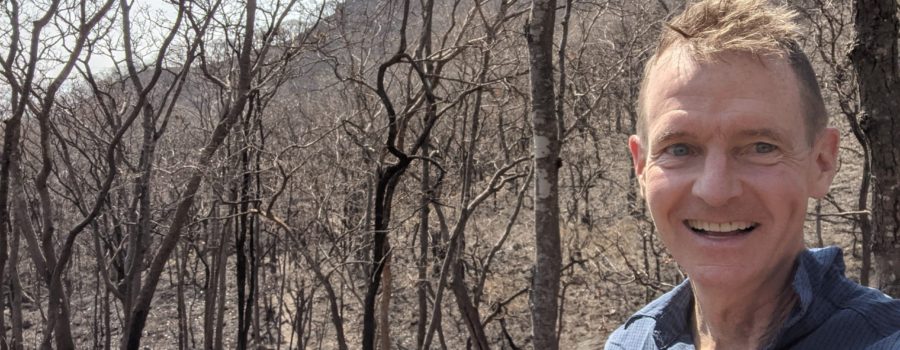Nine days ago, I returned to the Warm Heart of Africa. Though this tourist catchphrase refers to the warmth of the Malawian people, on this trip it also describes the weather. Today I experienced the Hot Heart of Africa.
Malawi lies 15 degrees south of the Equator. Here people do not refer to the seasons as spring, summer, autumn, or winter. Instead, Malawi has the Wet and Dry seasons. The wet season is typically December through late March. During this time, it rains for part of most days. The earth is blindingly green. Malawi is lush.
The dry season starts in early April. After its start, rain is much rarer, though still occasionally occurs. April and May are beautiful, perfect for outdoor activities. Though June and July are dry, in Blantyre (altitude 1039 meters or 3409 feet) it is chilly. In August and September, the world warms up a bit. The jacarandas bloom, dropping their petals and turning the streets purple. The frangipani release their sweet fragrance.
And October? I was warned it would be warm. After arriving I thought people were mistaken. My first few days coincided with a cool spell. The weather turned and the last 2 days have been hot. How hot? I found out yesterday.
Since my arrival the blue sky is cloudless. Afternoon temperatures are in the high 80s. At night it descends to the high 70s. It is dusty. As there has been no rain for months, the earth blows in the wind.
Most weekends I enjoy hiking on the outskirts of town in the Michiru Nature Conservation Area. Reaching the preserve requires a 45 minute (steeply downhill) bicycle ride. My favorite hike is 2 hours if rushed, 3 hours if I take my time. Returning home is the only challenging part, a 75 minute steeply uphill bicycle ride. Knowing it would likely be hot today, I decided to depart home no later than 6 a.m. Last night I packed water, a sun hat, and sunscreen.
Waking up at 5:30 a.m. this morning it was already warm. There was a slight breeze. The downhill ride to the Conservation Area was easy. I departed the Forestry Office at 6:50 a.m., only 5 minutes behind schedule. Immediately after beginning my walk, I noticed the difference between the current dry season and my usual wet season view. The normally lush green landscape had been burnt in controlled fires. The ground was black and smelled of smoke. In two locations, small fires burned on the path’s edges. None of the trees had leaves. The forest canopy, normally shielding me from the sun, was gone.
I briefly considered an abbreviated hike. I started up, smelling the smoke as I ascended and thought “I’m going to go for it. Since I never know what tomorrow will bring, power through it and figure it out later.” It almost worked.
I started up, smelling the smoke as I ascended and thought, “I’m going for it. Since I never know what tomorrow will bring, power through it and figure it out later.” It almost worked.
Finishing my walk around 9 a.m. I drank the last of my water before remounting my bicycle. I had done the uphill ride to home dozens of times previously. By this time, the semi-equatorial sun was intense. The first 3 km there was a bit of shade, as the path parallels a stream and some still-green plants shielded me from the sun’s rays.
Leaving the nature preserve’s boundary, I was completely at the weather’s mercy. For the first time in 10 years of doing this ride I could not complete it. Seventy-five percent of the way home, I was sweating and breathing heavily. I became acutely lightheaded and nauseous. Continuing was impossible. I found a small patch of shade near a bush and sat down. My bicycle fell down on top of me. I was too tired and nauseous to push it away. Passersby asked if I was okay. Feeling a bit embarrassed, the first few times I answered “yes.” Five minutes later I was not improving. When the next person walked by, asking if they could help, I explained the situation. Magically, they had a half bottle of water. I took their gift and drank the entire thing without breathing between gulps. My Samaritan departed.
A few minutes later I stood up. I was still lightheaded and nauseous, but was improving. I took a few slow steps uphill, pushing my bicycle. Once the nausea subsided, I remounted, pedaling slowly. Bit by bit, stopping a few more times, I made it home. Entering, I immediately drank 2 liters of refrigerated water, took a cold shower, drank another liter of water, and “had a lie down.” Late in the afternoon I urinated for the first time since early morning.
Previously when traveling in Africa I have chosen to visit during the dry (but still green) season. The wet season always sounded miserable to me, full of malaria and mud. After today’s experience in the Hot Heart of Africa, I am reconsidering my No Wet Season bias. Rather than decide that one season is better or worse, perhaps it is smarter to be a bit more careful in my planning. Maybe adapting my physical activities limits to the environment around me is what the Doctor ordered!






